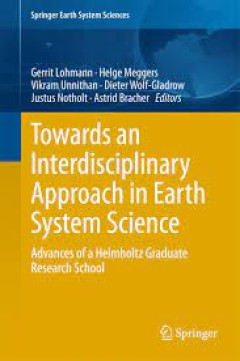Filter by

Trajectory Anomalies in Interplanetary Spacecraft A Method for Determining A…
This thesis presents fundamental work that explains two mysteries concerning the trajectory of interplanetary spacecraft. For the first problem, the so-called Pioneer anomaly, a wholly new and innovative method was developed for computing all contributions to the acceleration due to onboard thermal sources. Through a careful analysis of all parts of the spacecraft Pioneer 10 and 11, the applica…
- Edition
- -
- ISBN/ISSN
- 978-3-319-18980-2
- Collation
- -
- Series Title
- -
- Call Number
- -

Traffic and Random Processes An Introduction
This book deals in a basic and systematic manner with the fundamentals of random function theory and looks at some aspects related to arrival, vehicle headway and operational speed processes at the same time. The work serves as a useful practical and educational tool and aims at providing stimulus and motivation to investigate issues of such a strong applicative interest. It has a clearly discu…
- Edition
- -
- ISBN/ISSN
- 978-3-319-09324-6
- Collation
- -
- Series Title
- -
- Call Number
- -
Tracking and Mapping of Spatiotemporal Quantities Using Unicellular Swarm Int…
The book discusses new algorithms capable of searching for, tracking, mapping and providing a visualization of invisible substances. It reports on the realization of a bacterium-inspired robotic controller that can be used by an agent to search for any environmental spatial function such as temperature or pollution. Using the parameters of a mathematical model, the book shows that it is possibl…
- Edition
- -
- ISBN/ISSN
- 978-3-319-27425-6
- Collation
- -
- Series Title
- -
- Call Number
- -

Toxicological Risk Assessment for Beginners
This book serves as a comprehensive introductory guide to the practical aspects of risk assessment. Chapters include clearly defined objectives and summaries. The book includes: hazard identification, dose-response, exposure assessment, risk characterization, chemical mixtures, epidemiology, emerging issues and global perspectives with accessible language. The book concludes with a set of hypot…
- Edition
- -
- ISBN/ISSN
- 978-3-319-12751-4
- Collation
- -
- Series Title
- -
- Call Number
- -

Toxicological Effects of Perfluoroalkyl and Polyfluoroalkyl Substances
This book serves as a timely and comprehensive overview of the latest science for perfluoroalkyl and polyfluoroalkyl substances (PFASs), covering the development of methods for assessing PFASs in biological fluids and tissues as well as the current knowledge regarding their toxicity to vertebrate organisms. This book includes chapters on human and wildlife exposure/body burdens, reviews of meta…
- Edition
- -
- ISBN/ISSN
- 978-3-319-15518-0
- Collation
- -
- Series Title
- -
- Call Number
- -

Toxic Trauma A Basic Clinical Guide
Winner of BMA Medical Book Award, Highly Commended in Public Health Written for medical professionals, this book provides a concise reference with clear guidelines on how to manage both the victims of chemical agent exposure and the site of the incident. David Baker considers the nature and basic science of the hazards faced as well as the practical management of persons exposed to chemicals…
- Edition
- -
- ISBN/ISSN
- 978-3-319-40916-0
- Collation
- -
- Series Title
- -
- Call Number
- -

Towards an Interdisciplinary Approach in Earth System Science Advances of a …
This book describes the latest advances at the Helmholtz “Earth System Science Research School” where scientists from the Alfred Wegener Institute in Bremerhaven, the University of Bremen, and the Jacobs University are involved in research. One of the greatest challenges is understanding ongoing environmental changes. The longer the time scale the more components of the Earth system are in…
- Edition
- -
- ISBN/ISSN
- 978-3-319-13865-7
- Collation
- -
- Series Title
- -
- Call Number
- -

A Diary in America With Remarks on its Institutions
Captain Frederick Marryat (1792–1848) was a distinguished naval officer, today best remembered as a novelist (particularly of stories for children), often drawing on his own experiences. He also edited a radical journal, and wrote non-fiction, including an attack on press-gangs, which damaged his career. He spent 1837 and 1838 travelling in North America, publishing his impressions in this un…
- Edition
- -
- ISBN/ISSN
- 9781139058704
- Collation
- -
- Series Title
- Cambridge Library Collection - North American History
- Call Number
- -

A Diary in America With Remarks on its Institutions
Captain Frederick Marryat (1792–1848) was a distinguished naval officer, today best remembered as a novelist (particularly of stories for children), often drawing on his own experiences. He also edited a radical journal, and wrote non-fiction, including an attack on press-gangs, which damaged his career. He spent 1837 and 1838 travelling in North America, publishing his impressions in this un…
- Edition
- -
- ISBN/ISSN
- 9781139058711
- Collation
- -
- Series Title
- Cambridge Library Collection - North American History
- Call Number
- -

A Diary in America With Remarks on its Institutions
Captain Frederick Marryat (1792–1848) was a distinguished naval officer, today best remembered as a novelist (particularly of stories for children), often drawing on his own experiences. He also edited a radical journal, and wrote non-fiction, including an attack on press-gangs, which damaged his career. He spent 1837 and 1838 travelling in North America, publishing his impressions in this un…
- Edition
- -
- ISBN/ISSN
- 9781139058728
- Collation
- -
- Series Title
- Cambridge Library Collection - North American History
- Call Number
- -
 Computer Science, Information & General Works
Computer Science, Information & General Works  Philosophy & Psychology
Philosophy & Psychology  Religion
Religion  Social Sciences
Social Sciences  Language
Language  Pure Science
Pure Science  Applied Sciences
Applied Sciences  Art & Recreation
Art & Recreation  Literature
Literature  History & Geography
History & Geography